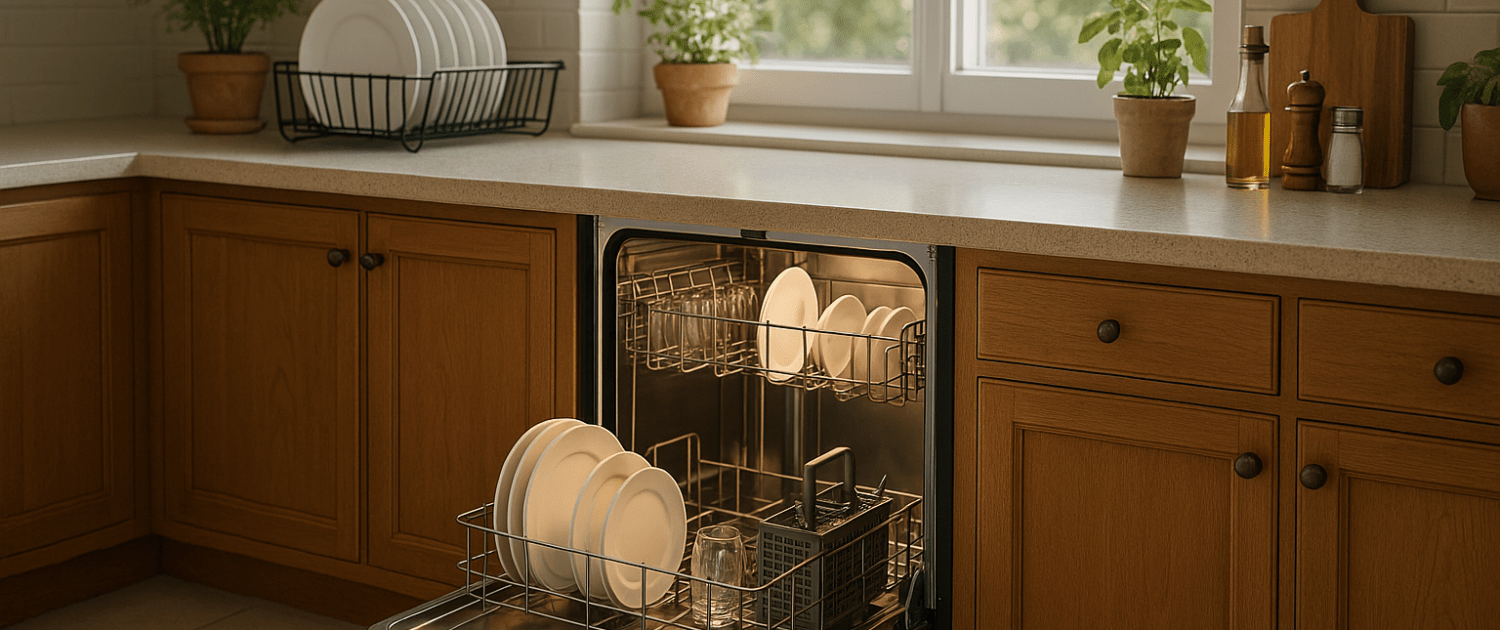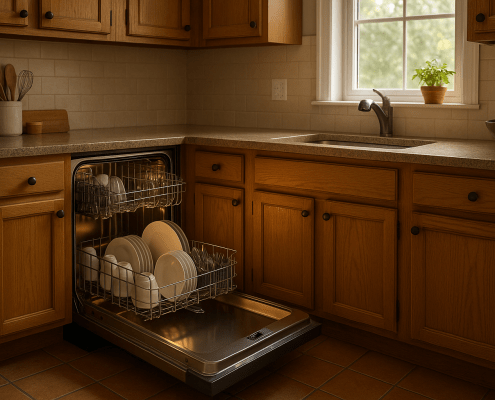Dishwasher float and shaft assembly WP8268895 replacement
Steven E / Tuesday May 27, 2025
Is your dishwasher struggling to fill correctly, leading to overflows or underfilled cycles? A faulty float and shaft assembly might be the culprit. Discover how to effortlessly fix this issue with our easy step-by-step guide and a handy how-to video right below, making your appliance work like new again in no time!
Looking for the right part? Enter your appliance model number below to find the exact match and get your appliance running like new again!
Is your dishwasher overfilling, underfilling, or not sensing the correct water level? The problem might be with a worn or stuck float and shaft assembly, part #WP8268895, which is common in Whirlpool, KitchenAid, and other related models. This small component triggers the float switch that controls the water fill cycle, so if it’s jammed or cracked, your dishwasher can’t fill correctly. Luckily, this is a simple, tool-free repair that most people can do in just a few minutes.
The information in this article may not apply to your specific appliance model. We recommend consulting your manufacturer’s documentation or contact us with any questions.
WATCH: How to install dishwasher float and shaft
What You’ll Need
Before starting this repair project, gather the following tools and supplies:
- Phillips and flat-blade screwdrivers
- 1⁄4 inch nut driver
- 5/16 inch nut driver
- 5/8 inch open-ended wrench
- Replacement float and shaft assembly WP8268895: Take your model number to AppliancePartsPros.com to locate the correct part for your model.
- Towels or bucket to catch water
Be sure to turn off the power to the dishwasher at the circuit breaker and turn off the water supply lines. Have a container ready to catch any water that may leak out during the repair.
Safety precautions
Safety should always be a priority when working on any appliance. Here are a few practical tips to help you stay safe:
- Turn off the power to the appliance by unplugging it or switching off the circuit breaker before starting any maintenance or repairs. This protects you from the risk of electric shock.
- Wear insulated gloves to shield your hands from sharp edges, pinching hazards, or debris.
- Work at a steady pace and take your time to avoid accidents or injuries.
- Make sure your workspace is well-lit so you can clearly see and access the parts you’re working on.
- Keep the area clear of clutter, and ensure children and pets stay out of the workspace.
- Never handle internal parts with wet hands. Check that both your hands and the work area are completely dry.
- Refer to your appliance’s user manual for any specific instructions or safety guidelines related to the part or repair.
- Handle parts gently to avoid damage to the appliance or potential injuries from applying too much force.
- Use safety glasses when dealing with chemicals, dust, or large debris to protect your eyes from harm.
- If the appliance was recently used, give it enough time to cool down before working on any heated components.
- Take photos or notes of wiring connections and terminals before disconnecting anything to make reassembly easier.
- Avoid touching exposed wires or terminals. If you must handle wires, use non-conductive tools or wear insulated gloves to minimize the risk of electrical shock.
Replacement Instructions
- Unplug the dishwasher from the electrical outlet and turn off the circuit breaker connected to the dishwasher. This prevents accidental shock while working on the appliance.
- Turn off the water supply using the shut-off valves under the sink or behind the dishwasher. Turning the knob clockwise fully closes the valve.
- Disconnect the water supply line from the dishwasher inlet valve. The line connects with a threaded compression fitting – use pliers or an adjustable wrench to loosen the nut.
- Disconnect the drain hose from the sink drain or garbage disposal. The hose typically attaches with a spring clamp that can be loosened with pliers.
- Remove the mounting screws and pull the dishwasher out from under the counter to. Place towels underneath to catch water drips. Lay the dishwasher on its back to better access the components
- Take off the access panel below the door using a Phillips screwdriver to remove the two retaining screws. The panel covers the float components.
- Remove the float bracket by loosening the single screw and holding it in place with a Phillips screwdriver. Turn the bracket clockwise slightly to slide it off.
- Open the door and remove the old float assembly. You may need to wiggle it around to dislodge it.
Install the new float assembly
- Open the door and insert the new float assembly into the opening inside the tub, guiding the shaft through the hole. Fully seat the float in place.
- Slide the float bracket onto the shaft and turn it counter-clockwise to lock it in position.
- Secure the bracket with the retaining screw using a Phillips screwdriver. Do not over-tighten.
- Replace the access panel using the two Phillips screws. Make sure all interior components are correctly positioned.
Reinstall the dishwasher
- Push the dishwasher back into position under the counter, taking care not to bend or kink the hoses.
- Reconnect the drain hose to the disposal or drain pipe and tighten the clamp securely.
- Attach the water supply line to the inlet valve and tighten the compression nut with pliers.
- Turn on the water supply and check for leaks. Tighten any connections if needed.
- Screw the mounting brackets back into the cabinet.
- Plug in the dishwasher and restore power at the circuit breaker.
- Test a cycle to verify normal float operation and no leaks. Adjust or repair as needed.
More Information
Thanks for reading! We hope this article helped you replace the float and shaft assembly in your Whirlpool dishwasher.
If you still need some replacement parts, grab your model number and head over to AppliancePartsPros.com. We offer over two million parts and most orders arrive in two business days. If you need some help with finding the right part or placing an order, you can contact our team at 1 (877) 477-7278.
While you’re waiting for your new part to arrive, you can explore our DIY blog and watch thousands of video tutorials on our YouTube channel.
Be sure to follow us on Facebook, Twitter and Instagram to see our latest repair guides!
With nearly a decade of experience in providing top-notch customer service regarding appliance parts and repair, Steven enjoys sharing practical advice, troubleshooting tips, and interesting information to help readers stay informed.





